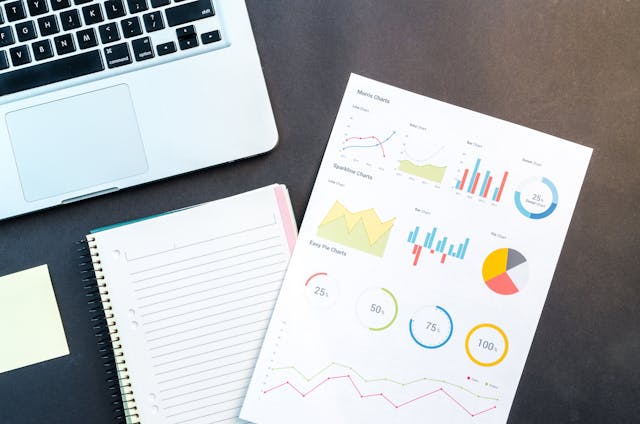Write Us: hello@ali5.org
How Search Engines Work: Crawling, Indexing & Ranking Explained
Discover how search engines work! This beginner-friendly guide explains crawling, indexing, and ranking in simple terms + actionable SEO tips to boost visibility.

Why it’s important to know how search engines work
Think of the internet as a library with more than 2 billion websites. It would be impossible to find information without a librarian (search engines). Google handles 8.5 billion searches every day with three secret weapons:
- Crawling (finding content)
- Putting it in order (indexing)
- Ranking (getting the best results)
You don’t need a tech degree to learn these mechanics and get better at SEO.
The 3-Step Process: Get Your Site to the Top of Google
Crawling —-> Indexing —-> Ranking
Step 1: Crawling—The Web’s Treasure Hunters
- Search engines use bots, which are also called spiders or crawlers, to look through the web all the time.
- 🔍 How they find sites: They follow links from pages they already know about, like a digital “connect the dots.”
- 🚧 Common problems: links that don’t work, pages that take a long time to load, or robots.txt restrictions.
⚡ Your SEO fix:
- Send your sitemap.xml to Google Search Console.
- Use tools like Screaming Frog to fix broken links.
- Make sure pages load in less than two seconds.
💡 Pro Tip: To see if Google can crawl your pages, go to Google Search Console > URL Inspection.
Step 2: Indexing—Google’s Way of Organizing Files
Once bots find your page, they look at it and save it in Google’s database, called the index:
- ✅ What gets processed: text, pictures, videos, and structured data.
- ❌ What is not looked at: pages with duplicate content, pages with passwords, or text that is not well written.
- Google’s index has more than 500 billion pages, but that’s only 5–10% of the whole web!
Checklist for SEO to Improve Indexing:
- Don’t use thin or duplicate pages; instead, use original, high-quality content.
- Add schema markup to make the page’s context clearer.
- Get rid of orphan pages, which are pages that don’t have any links to other pages on the site.
⚠️ Warning: If your page isn’t indexed, it won’t show up in search results!
Step 3: Ranking—The Fight for First Place
When you type “best running shoes” into Google, its algorithm (RankBrain) looks at more than 200 things to rank pages:
Main Factors for Ranking:
Factor Why It Matters How to Make Relevance BetterDoes the content fit the search? Target keywords in titles, headers, and contentCan you trust the source?Get backlinks from sites that are well-known
User ExperienceIs it simple to use the site?Improve speed, mobile UX, and HTTPS. Lesser-Known Influencers:
- Click-Through Rate (CTR): A high CTR means that Google thinks your result is relevant.
- Dwell Time: If users stay for more than 2 minutes, it means the content is valuable.
- Freshness: New updates help time-sensitive searches, like “SEO trends for 2024.”
- Technical SEO: Making Bots Work for You Common Mistakes and How to Fix Them:
Problem, effect, and solution
- Site speed is slow53% of mobile users leave after 3 seconds.Use a CDN and make images smaller.
- Blocked JavaScript and CSS make it so that bots can’t “see” your page. Don’t use resources that block rendering.
- Bad design for mobile Google punishes sites that aren’t mobile-friendly Use responsive design and check it with Google’s Mobile-Friendly Tool.
5 Steps You Can Take to Learn
- How to Crawl, Index, and Rank Google Search Console lets you keep an eye on crawl errors, indexing status, and queries.
- Send in your sitemap: Shows bots how to get to all the important pages.
- Fix orphan pages by adding internal links so that bots can find them.
- Check the speed of your pages with PageSpeed Insights and fix any “Critical” problems.
- Target Low-Competition Keywords: Get some authority before going after keywords with a lot of competition.
How Search Engines Really Work: Myths vs. Reality
Myth: Reality
“Google reads pages the same way people do.”Bots look at the code and structure, not the design.
“More pages mean better rankings.”More is not always better. Ten good pages are better than one hundred thin ones.
“Meta keywords help SEO.”Google doesn’t pay attention to them, so pay attention to title tags and content instead.
Key Tools for Visibility: Screaming Frog and Ahrefs Site Audit for Crawling
- Indexing: Bing Webmaster Tools and Google Search Console
- Position Tracking by Semrush and Google Analytics 4 for ranking
- The Golden Rule: “Make things for people first, then make them better for bots.”
Search engines are changing to give better experiences to users. If you focus on solving problems, the rankings will come.
Key Points:
- Crawling is a way for bots to find your site. You can help them by using sitemaps and internal links.
- Indexing is storing: Make sure that pages are one-of-a-kind and easy to find.
- Competition is ranking: to win, you need to be relevant, have authority, and have a good user experience.
- Technical SEO is important; you should fix speed, mobile, and security first.







